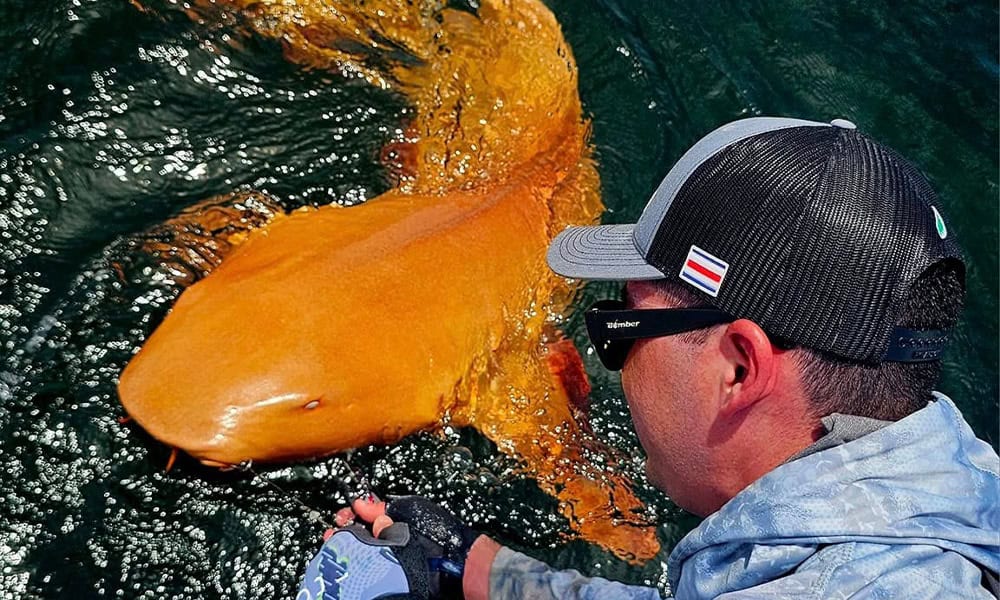Anglers on a fishing trip off Costa Rica’s Caribbean coast caught a nurse shark unlike any seen before: bright orange skin and stark white eyes. This adult shark, about two meters long, marks the first recorded case of xanthism in its species, Ginglymostoma cirratum, and in these waters. The find happened last August near Tortuguero National Park during a sport fishing outing with the Parismina Domus Dei tour company.
Fishermen released it after a quick examination, and it swam away in good shape. Researchers later confirmed the orange hue comes from xanthism, a genetic trait that boosts yellow-orange pigments. Paired with albinism showing in the eyes’ total lack of color, this mix—called albino-xanthism—stands out as one of a kind.
A team including Marioxis Macías-Cuyare, Gilberto Rafael Borges Guzmán, and Daniel Arauz-Naranjo published their findings in a scientific journal. They noted this as the first full xanthism in a free-swimming nurse shark from the Caribbean. “This case opens doors to learn more about genetic changes in sea life,” the researchers said. They point out how the shark’s odd colors didn’t stop it from growing to full size and staying healthy, which questions old ideas about how such traits affect survival in the wild.
Nurse sharks typically blend into ocean floors with brown or gray tones, but this one’s vivid shade would stand out to hunters. Yet it thrived, suggesting these animals adapt better than expected. The team wonders if local factors like water warmth or food play a role in these traits showing up.
This shark adds to Costa Rica’s record of unique marine finds. Past research tracked nurse sharks moving long distances along the Pacific coast, showing their range and toughness. But this Caribbean specimen brings fresh questions: Is it alone, or part of a bigger pattern? The researchers call for more checks on how environment shapes genes in these sharks.
Photos and videos from the catch spread online, with posts confirming it’s real—not made by tech. The orange nurse shark now serves as a real-life example for talks on biodiversity. For anglers and scientists in the area, it reminds everyone to watch for the unexpected in familiar spots.
Experts say tracking such cases helps protect nurse sharks, which face threats from fishing and habitat shifts. This find pushes for closer looks at genetic diversity to keep populations strong. As research continues, it could shape how we safeguard these slow-moving bottom dwellers in tropical seas.
The team behind the study hopes to spark interest in monitoring Costa Rica’s waters. With tourism and fishing big in our area, hopefully, sightings like this might lead to better rules for handling rare animals.






